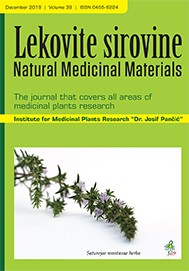Institute for Medicinal Plants Research “Dr. Josif Pančić” , Belgrade , Serbia
Institute for Medicinal Plants Research “Dr. Josif Pančić” , Belgrade , Serbia
Department of Pharmaceutical Technology and Cosmetology, Faculty of Pharmacy, University of Belgrade , Belgrade , Serbia
Department of Pharmaceutical Technology and Cosmetology, Faculty of Pharmacy, University of Belgrade , Belgrade , Serbia
This article describes the preparation, characterization, and application of W/O/W emulsions, with emphasis on the encapsulation of plant bioactives. The main limitations preventing commercialization of double emulsions with plant bioactive substances, used for the preparation of food, nutraceuticals and pharmaceuticals for oral administration, are low thermodynamic stability and the limited range of the available lipophilic emulsifiers. In that regard, strategies for stability improvement of W/O/W emulsions with bioactive substances are highlighted.
This is an open access article distributed under the Creative Commons Attribution License which permits unrestricted use, distribution, and reproduction in any medium, provided the original work is properly cited.

The statements, opinions and data contained in the journal are solely those of the individual authors and contributors and not of the publisher and the editor(s). We stay neutral with regard to jurisdictional claims in published maps and institutional affiliations.